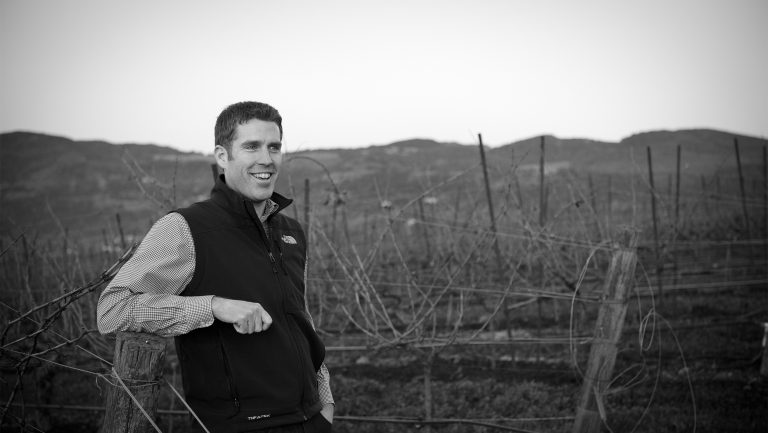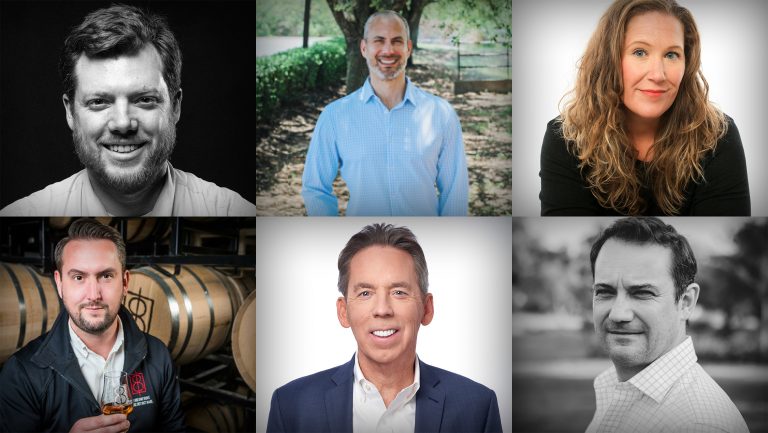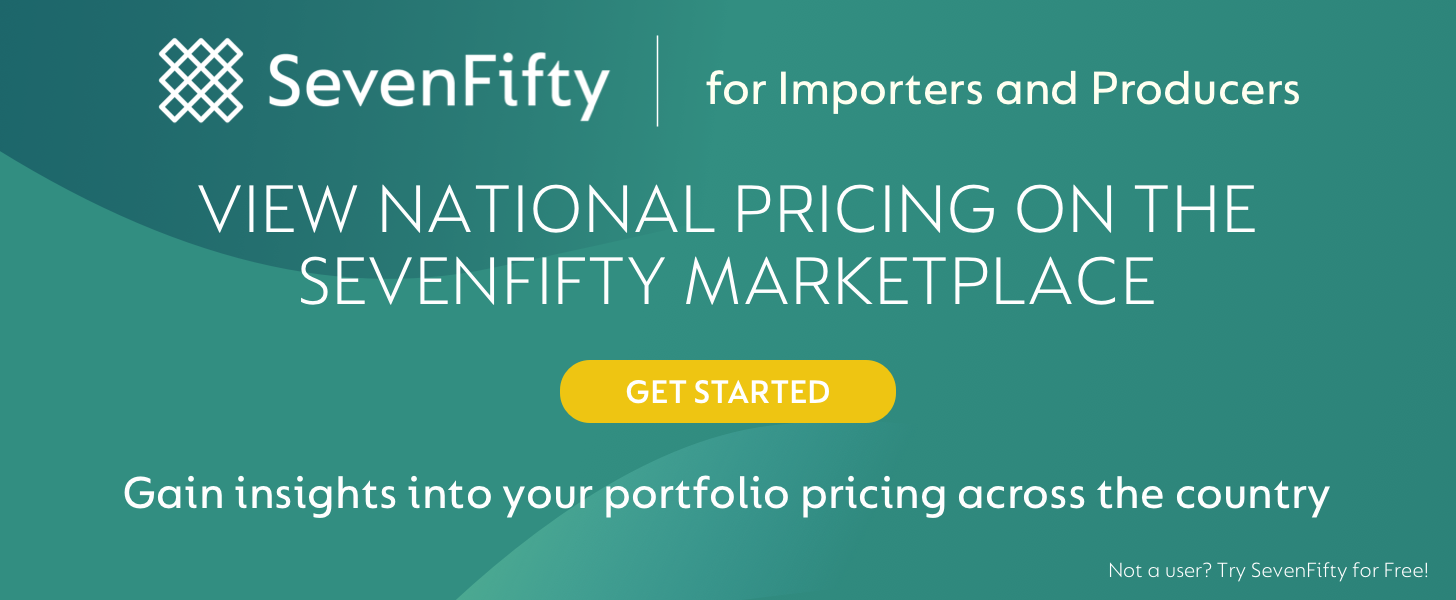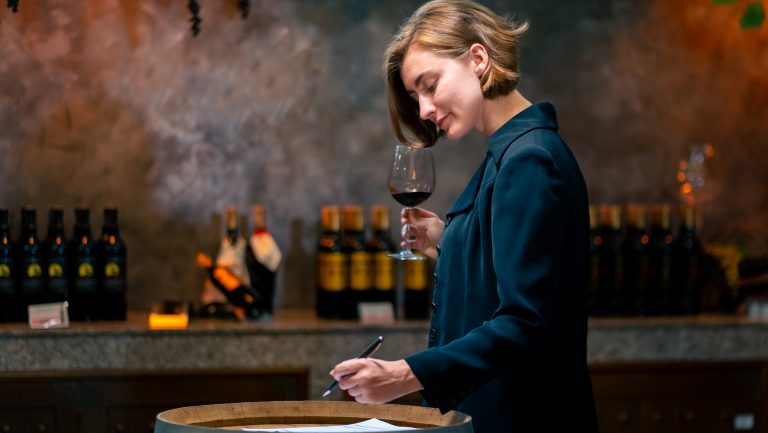“It’s not just about the numbers and hitting the goals,” says James Stewart, the co-proprietor of Yountville, California-based Stewart Cellars, about his distribution partners. “It’s about making friends. These people that I’ve worked with over the years, they’re my friends. I’m genuinely interested in their well-being and the well-being of their families.”
A relationship like the one James Stewart has with his distributors doesn’t always happen. But as those with experience point out, there are certain steps a small to midsize wine or spirits supplier can take at the outset that can increase the chances that it does—while ensuring strong sales and representation in the local market.
From determining the right size of distributor to understanding where your brand will fit within a portfolio and becoming aligned on expectations early, SevenFifty Daily spoke with suppliers and distributors to get insider tips on choosing distributor partners wisely.

Don’t miss the latest drinks industry news and insights. Sign up for our award-winning newsletters and get insider intel, resources, and trends delivered to your inbox every week.
Understand Each Specific Marketplace
Every U.S. market is unique, even within state lines. Is that market already flooded with what you are selling? Will your brand have a niche? At the same time, take into consideration the current market environment and economic conditions.
The goal is to gauge all this before you sit down with a potential distributor so you have reasonable expectations.
“A lot of times people don’t understand the big picture, and they’re totally unreasonable about what they expect the distributors to do,” says Scott Osborn, the president and co-owner of Fox Run Vineyards in New York’s Finger Lakes region. “It’s partly because they don’t understand what their role is with the distributor.”
Eric Stewart, the president and owner of Vanguard Wines, an importer and distributor in Ohio, Kentucky, and Indiana, echoes this sentiment. “The biggest mistake I see made is the lack of patience, really taking that time to investigate the market before you enter into it,” he notes.

Study the Distributor’s Book
Looking at the distributor’s overall portfolio is a crucial step in determining if your brand fits.
“Look at some of their priority brands; can you see your brand getting its fair share of attention?” asks John Beaudette, the president and founder of national import, distribution, and service provider MHW, Ltd. “That’s a critical element.”
“I see which other Oregon brands are in their portfolio and where they are priced,” says Rebecca Oliver, the national sales manager for Lemelson Vineyards in Carlton, Oregon. “The sales rep may have 40 Oregon Pinot Noirs to sell to one account, so you’re just trying to capture mindshare. You need to stand out.”
Also important: does the distributor carry any in-demand brands? “I like to see what key brands that they have in their book would make them relevant to a buyer,” says Oliver. “That buyer, that sommelier, is going to want to talk to that salesperson. So, they’ve already got a foot in the door.”
Suppliers should also consider whether they would differentiate a distributor’s portfolio or fit in with it seamlessly; either can be valuable. “Some distributors are better known for beer, wine, or specific types of spirits,” says Laura Kanzler, a regional sales manager with Hotaling & Co. in San Francisco. “You might be their only shiny whiskey, or their only shiny rum, or maybe you want to be with a distributor who is known for their rum book so you’ll just be one of the cool kids in that book.”
The distributor will be evaluating the same thing about you as well. Nick Demjen, the general manager for emerging spirit brands at Horizon Beverage in Massachusetts, says he strategically evaluates the impact a new brand will have on his portfolio. “Will this new potential brand take away from existing sales?” he says. “If it’s only going to complement your existing portfolio, then it’s something that you would consider to bring on.”
At the same time, there’s a balance. “Obviously the lifeline of a distributor is bringing on new brands and new products but at the same time you also still want to grow your existing supplier brands and not take any focus away from them,” adds Demjen.
Large vs. Small Wholesalers: Determining the Right Size for Your Brand
Small to midsize suppliers must decide whether a similarly small, mom-and-pop distributor who can better identify with growing brands is the right fit for them, or whether a large wholesaler may have the resources and multi-state footprint to streamline logistics.
With plans to launch with well-known travel companies like Amtrak and Virgin Voyages, Crafthouse Cocktails had to adjust to the new realities of 2020. One of the solutions was working with smaller distributors in targeted markets.
For example, in Colorado they decided to partner with European Wine & Spirits, which focuses on top-tier accounts in that market. “Their ability to execute even during the pandemic was impressive, and Colorado remains one of our most successful markets to date,” says Casey Iaccino, Crafthouse’s chief growth officer.
The size of the distributor’s salesforce is something that’s important to Ben Kaehler, Lemelson’s general manager. “How are they able to service the account?” he says. “I think especially for smaller to medium-sized brands, that’s really critical. You make a placement, but if they don’t continue to service the accounts you can lose that placement, and that’s a huge loss.”

Yet a large sales force does not equate to better sales performance for all brands. Bruce Murray, the owner of Boundary Breaks Vineyard in the Finger Lakes, whose winery sells between 5,000 and 7,000 cases a year, says he prefers the attention he gets from a smaller distributor. “They tend to have a different perspective on wines like ours,” he says. “They’re the ones finding the diamonds in the rough.”
Some like smaller distributors because they often align with independent and specialty accounts—which are good fits for new brands trying to gain traction. John Carrabus, the director of sales for the Northeast at One Eight Distilling in Washington, D.C., has found smaller wholesalers tend to focus on the craft-friendly accounts where his spirits thrive. “Our brands are positioned similarly to a lot of other smaller craft and emerging brands,” he says. “And being able to get that extra attention and that kind of foot in the door at some of these more kind of curated places is helpful.”
James Stewart, of Stewart Cellars, believes emerging brands have a better chance of being cultivated in a smaller house. “The larger distributors are not always in the business of growing something. You go to those really large companies once you’ve already grown and you’re an asset to them,” he says.
Adds Kanzler, “With a larger distributor you might not be able to move as quickly because there are more people and more logistics to deal with. With a smaller one, you can maybe do things more quickly on certain fronts but you might not have the reach.”
Solutions like the Independent Distributor Network (IDN) may offer the best of both worlds. A network of independently owned and operated distributors across 29 states, IDN can provide the fine wine culture of a small house, but offer multi-state representation at the same time. Being close to the ground in each of its member markets, the IDN seeks to help mid-to-large scale wineries and distilleries gain national distribution.
“Our goal is to be in all 50 states,” says David Browne, the network’s president. “We’re a mix of all different types of distributors but we are all family owned and operated and multi-generational, so that’s kind of the people that we are trying to attract. People looking to grow their business and move business forward. We want to help some suppliers get a national footprint.”
Know the People—Not Just the Company
For a smaller winery or craft distillery trying to grow its business, the talents and experience of each individual member of the distributor’s sales team can be crucial. As a result, Murray, of Boundary Breaks, recommends taking some time to research the individual members of the distributor’s sales team. A lot of this information can be found on their websites.
“If their bio says a salesperson has been with this distributor for eight years, that tells me they’re probably a professional salesperson that knows wine and is respected by the accounts in their territory,” he says. “If there’s a lot of turnover, they may be new to the industry and not have the relationships with the accounts that would be well-established and trusted.”
“There is this joke that the whole wine industry is like a game of telephone,” says Seth Fagelman, the president and co-CEO of Serendipity Wines. “Part of our job is to make sure that the brand’s story gets told correctly and makes its way all the way to the end customer. So having really knowledgeable people is critical to making sure that story gets told properly.”
By knowing the individual team members, brands can attempt to connect with them one on one. “Are there some key sales reps that you can sort of latch on to that are going to be the ones that spark that fire for your brand?” adds Beaudette, of MHW.

Get Aligned on Expectations Upfront
What kind of support the distributor is expecting from the supplier—and vice versa—is something that Giles Thomas, the founder of South African wine importer Baobab Wines likes to discuss upfront. “We talk about samples, and what the producer’s expectations are on things like marketing allowances, because you really need to understand the financial obligation you’re getting into to make sure there’s enough margin for everyone to pull through the product,” he says.
Being very clear about details—such as sales expectations in year one, the number of market visits the supplier will make, how many samples will be shown, and to which accounts—will prevent frustration down the road. “What specific goals or expectations do you have? And support it by data,” advises Vanguard’s Eric Stewart. “That’s so much better than feelings. We avoid the ‘Field of Dreams’ wineries that ‘if you bottle it, they will come.’ That is a recipe for disaster every single time.”
Choose a Team You’re Prepared to Support
Suppliers should realize that distributors are looking for true partnership.
“With everything that’s going on, especially right now, the squeaky wheels are the ones getting the attention,” says Browne, IDN’s president. “We need partners that are going to be out there on the road, that are connecting and educating our people and customers.
“There are so many good products now; so many more wineries and distilleries than there ever was,” Browne continues. “But the ones that are most successful, in my opinion, are those that have the relationships, whether it’s with the distributor or with the customers—the retailers and the restaurateurs. So, they need to be active. The people that have those relationships in the end win.”
Kate Palmer, whose company, Hearts + Tales Beverage Co. in Vallejo, California, specializes in helping artisanal brands get to market, says it’s no longer just about what’s in the bottle. “The craft spirits movement has been around for long enough now that they don’t want to hold your hand anymore. They don’t have time,” she says. “They’re looking for industry experience and a commitment to be successful in the market. You just have to be way more buttoned up as a supplier then you were ten years ago.”
Brands will need to demonstrate a willingness to do some of the heavy lifting in order to secure a partnership with a distributor, including acting as a brand ambassador, generating sales and leads, and engaging on social media platforms. “Chances are they’re not even going to get to the second meeting if they have not produced a package that shows ‘hey, we’re going to be active in the market,’” says Beaudette.
Horizon’s Demjen says such support is important. “Something that I know that our reps and team appreciate is when there’s somebody on the street level that they can reach out to from the supplier and get some support from them,” he says.
“The work doesn’t stop once the wine arrives in our warehouses,” adds Fagelman, of Serendipity Wines. “The work must continue on both of our parts to communicate to the end users, and to help our customers, the restaurants and the retailers, sell these products to their customers as well.”
The Benefit of Beer Distributors
Sometimes, the distribution solution lies with a wholesaler that doesn’t solely focus on, or even mainly focus on, wine and spirits. For example, beer distributors with a small fine wine team can be a good fit for many brands. Thomas, of Baobab Wines, has found benefits in partnering with companies like Burke Beverage in Illinois and Savannah Distributing in Georgia. “They have the distribution footprint and gateway to many accounts, yet their wine program is generally more niche,” he says. “It is like having a small wine wholesaler sitting in a major wholesaler. I can find a home quite happily in that kind of distributor.”
Last year, Fox Run Vineyards also decided to partner with a number of beer distributors within their home state of New York. “All have much smaller territories and a much more concentrated focus,” says Osborn. “And that has so far been the right choice for us. They have a small portfolio of wine and spirits and we are tending to fit within that much better than in the other wine distributors that we were with.”

Value and Culture Alignment Matters
In today’s hyper-connected social media environment, doing a deep dive into the business practices of distributors and the other brands they carry may be worth the time and effort. “Does that distributor align with your core values?” asks Karen Blackburn, the director of brand strategy for Serendipity Wines.
“They will be the face of your brand in that market,” adds Kanzler. “What is their reputation out there with other accounts and buyers?” Talking to customers and other suppliers to find out what their experiences are like with that distributor can offer important intel.
As an importer of South African wines, Thomas says he is especially sensitive to labor practices, for example. “The last thing I want to be is tied to a distributor that is supporting another brand that is not operating in an ethical way,” he says.
Go with Your Gut
Remember that this is a people business, and often the distributor relationship that works can come down to that personal connection, or even vibe, you just get from your meetings with their team. Do you feel like this is a group that really gets you and your brand?
Chemistry is critical, says Beaudette, because “these are mini-marriages.”
“You’re going to rely on your metrics, you’re going to rely on third-party information, but then you’re also going to rely on the vibe you get from the person,” says Thomas. “That’s always important.”

Dispatch
Sign up for our award-winning newsletter
Don’t miss the latest drinks industry news and insights—delivered to your inbox every week.
Andrew Kaplan is a freelance writer based in New York City. He was managing editor of Beverage World magazine for 14 years and has worked for a variety of other food and beverage-related publications, and also newspapers. Follow him on Twitter at @andrewkap.








